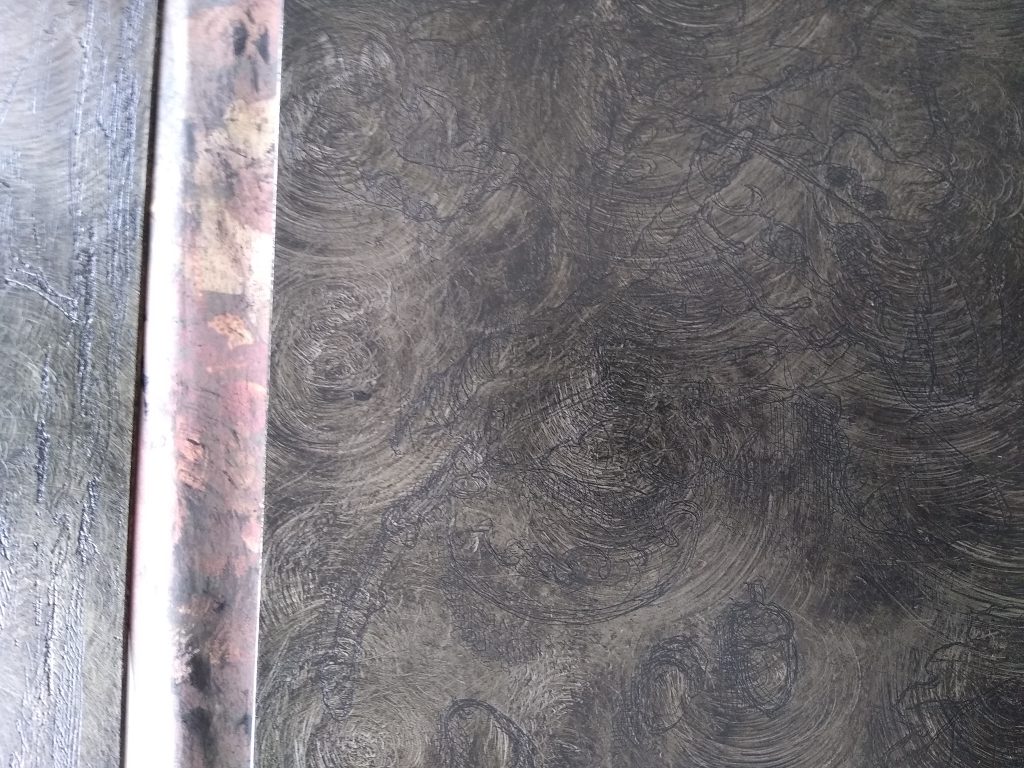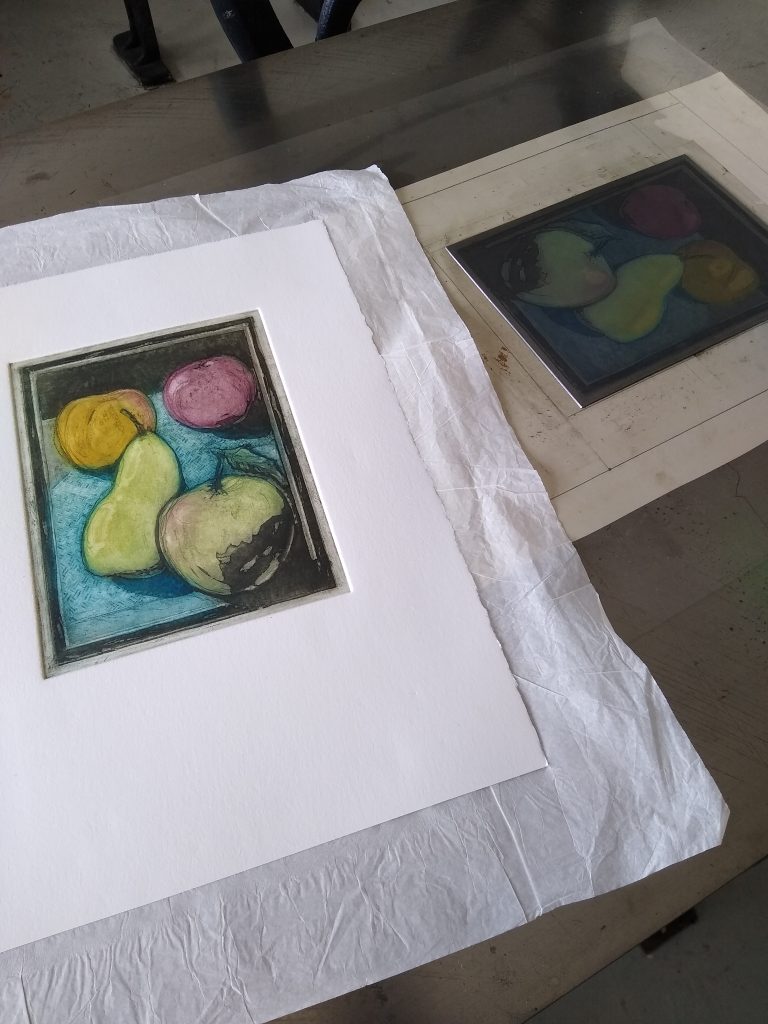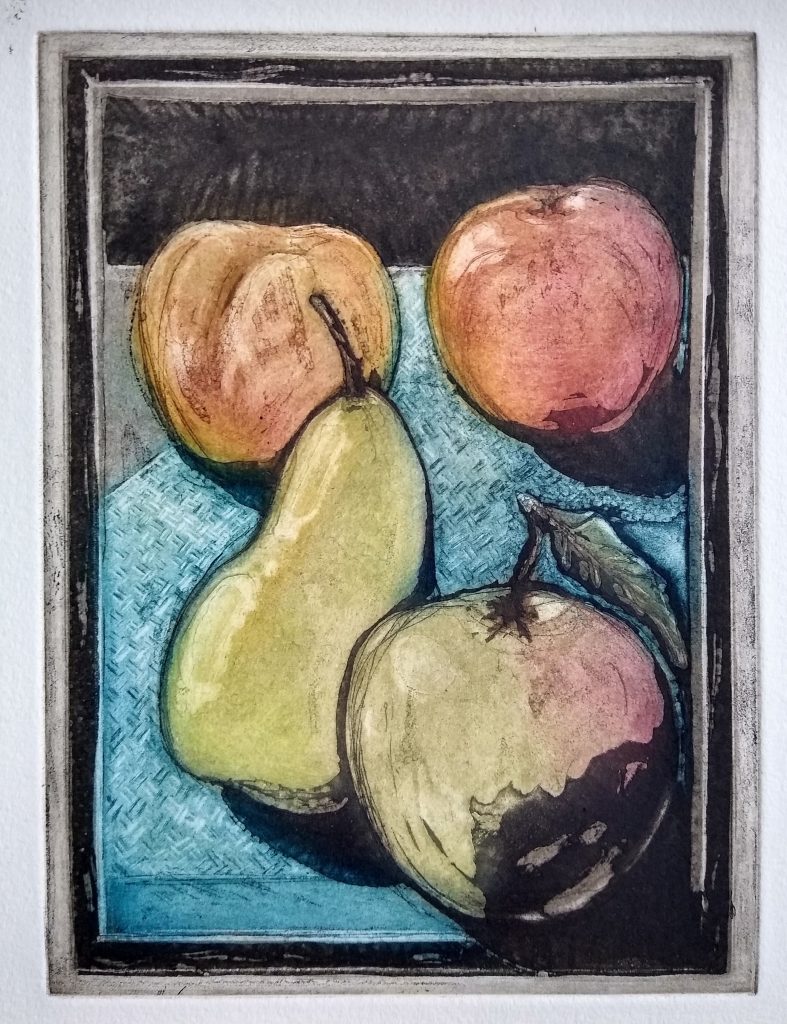History of Etching
Origins and Early Development
Etching was initially employed in the decoration of armour, with armour makers creating impressions of their designs to present to prospective buyers—typically wealthy knights. These designs often held religious significance, providing symbolic meaning for the wearer. The process enabled these craftsmen to showcase intricate emblems tailored to the personal beliefs and requirements of their clients. (Jenkins et al., 2019)
Printmaking Techniques in the Late Fifteenth Century
In late fifteenth-century Europe, artists were familiar with two primary methods for making prints: woodcut and engraving.
Engraving, in particular, was a specialised skill mastered by goldsmiths. Both woodcut and engraving relied on the technique of cross-hatching, which was used to create shapes and form within an image. These methods formed the foundation of printmaking during this era.
The technique of etching metal can be traced back to the thirteenth century, but it was not until 1500, Daniel Hopfer, armour etcher of Augsburg, that the leap was made from etching metal armour to printmaker. Initially etching was a process done on armour and armour makers may have created an impression of their designs to be able to show to prospective knights looking for emblems that had meaning to them, usually of religious context. (Jenkins et al., 2019)
Image: The Wallace Collection; Armour
Exploring the Potential of Etching
A printed etching was a way to bring a reproduction of a master painting or holy imagery to a wider audience.
The early users of the new technique were thinking how they could utilise its properties, it could make a drawing, or something that looked like an engraving, especially by those using a more formal technique of hatchings thus creating an appearance that was very close to how engravings looked, almost indistinguishable from them. The advent of printed etchings enabled the reproduction of master paintings and religious imagery, making art more accessible to a wider audience than ever before. (Jenkins et al., 2019)
Spread of Etching Across Europe
From Augsburg to the Artisans
The technique of etching rapidly spread from Augsburg to other major artistic centres, including Nuremberg, Leiden, Bologna, Verona, Venice, Paris, and Antwerp. Artists who were accustomed to the engraving process began to experiment with the possibilities offered by etching. Notably, Rembrandt, and Albrecht Dürer tried their hand at the new process, while Francesco Parmigianino found that etching provided greater freedom and scope for experimentation. This innovation allowed artists to produce freely drawn works that could be reproduced in multiple impressions, expanding both the creative and practical horizons of printmaking. (Jenkins et al., 2019)
The notion to reproduce a drawing, iconographic image, or texts in multiples began a revolution in spreading ideas, images religious notions to the masses.
Materials and Methods in Early Etching
Etching Technique and Process
The Intaglio etching process has changed little over the centuries.
The foundational techniques of etching have changed little since their origins in the late Middle Ages. Originally, artists decorated metal objects by exposing them to acid. To create a printing plate, a flat metal surface was coated with an oily, acid-resistant wax. Using a needle, the artist would draw a design, exposing the metal beneath the wax. When the drawing was complete, the rest of the plate—its sides and back—was protected with wax. The plate was then submerged in a tray of acid, such as nitric acid, which would “bite” into the exposed metal. Once the etching process reached the desired depth, the plate was washed and the wax removed, leaving the design incised in the metal. Ink was applied, then wiped from the surface so only the grooves held the ink, allowing the design to be printed. (Jenkins et al., 2019)
Creating an Etching today
Early techniques were not so different to today’s etching materials. Derived from the late middle ages, evolved from a way of decorating metal objects by means of biting them in acid.
The artist draws through a resin resist, which is resistant to acid, onto a metal substrate such as copper, zinc or steel with an etching needle. The plate is then immersed in acid so that it is etched along the incised lines. This etched linear drawing provides the foundation for all plates. The plate is then inked up and printed to test the state of the etching. The plate may under go several more dips into the etching mordant as the image or design is worked on and is developed further. Each time the image is etched it is hand printed on heavy acid-free paper using a 150 year old printing press.
Aquatint
A fine matrices of acid resistant dots
Another intaglio process using acid, in which the plate is carefully and evenly covered with a powdered rosin, which is heated so that each particle of dust melt becomes crystallised and adhere firmly to the plate. The particles leave small exposed sections of the plate, which are then bitten by the mordant when immersed. Through a series of resin treatments delicate gradations of tone can be produced. The aquatint is characterised by a fine or coarse grainy texture of tones.
A substance known as collophany was used, but proved to be highly carsinagenic, a tree sap, powdered rosin is used, however, extreme care must be taken with all fine powder, health and safety risks means a pp3 facial mask should be worn to prevent inhalation of the dust particles.
You can read more about Intaglio Printmaking techniques here
Preparing the plate
Polish, Clean, Degrease.
The metal plate is prepared by cleaning it to remove grease
The metal plate is prepared by cleaning it to remove grease, and a hard ground is applied, a layer of soot from tapper candles is skilfully applied to the surface of the hard ground, this gives the surface a harder shell and creates more contrast with the metal underneath when it is removed. This surface is worked into using an etchers needle or other suitable point or nib.
Taking care not to scratch the surface of the metal, the hard ground is removed to expose the metal underneath, which will be attacked by the etching mordant and thus making the intaglio lines.
The plate is removed from the etching solution after a period of time, it is rinsed well and the protective ground removed. The plate can be inked and a state proof (sp) is pulled to see how succesful the bite has been.
Pulling a Print and inking the plate
Inking The Plate
The ink having been worked with a palette knife to condition and ensure the binders are well mixed is dragged across the surface of the plate, a wad of old used scrim is used to push the ink into the etched lines, a clean scrim is used to wipe the ink from the surface and the image will begin to reveal itself on the plate.

Paper is prepared by soaking it for an hour and blotted well on sheets of blotting paper or a towel. The paper needs to be damp and any excess moisture should be blotted away. The paper is laid over the plate on the bed of the printing press, a piece of tissue is placed over the paper and then the press blankets are laid over the top.
The bed with three blankets, the paper and the inked up plate is slowly passed under the rollers.
A Print straight off the press.


Apple Pear Apricot Plum. 2023